How to Pave a Complex Lot
BY John Ball
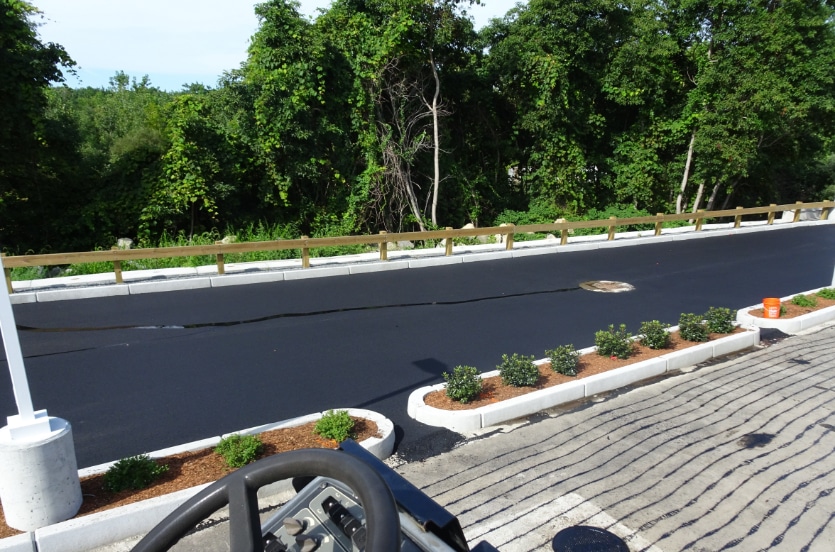
In 2021, a paving crew for Pawtucket Paving out of Rhode Island tackled a commercial project that only needed about 400 tons of asphalt mix but required a great deal of expertise. The team started by mapping out a plan of action to work around the following:
- the new convenience store;
- a drive-thru lane with stanchions;
- gas pumps;
- raised, decorative curbing;
- multiple grates and utility covers;
- fenced dumpster areas; and
- parking areas.
They needed to accomplish this single lift of top course while building the proper pitch to allow water drainage within the curbed property. At the end of the day, their hard work left a smooth and beautiful mat for the customer. Let’s take a look at how they did it.
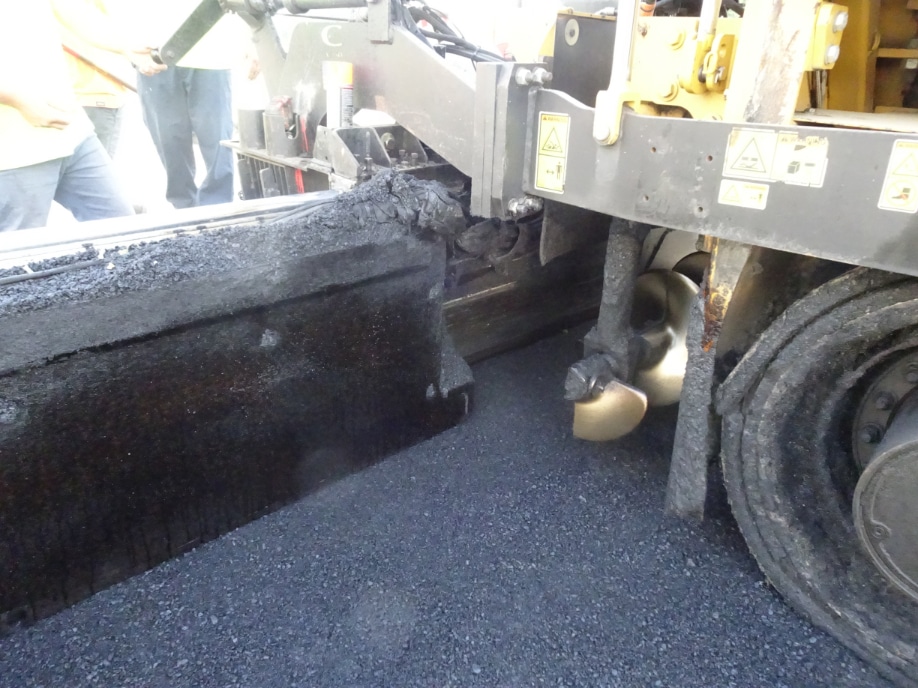
Because the crew would pave various widths throughout the project, they manually shoveled material to the endgate rather than install and remove auger extensions repeatedly throughout the day.
Starter Pads, Plates
During the year prior to this sunny day, sitework included drain and utility installation, and the base course and extensive curb work you see in these pictures. When it came time to pave the lot, the crew began with a starter pad for the first lane across the front part of the property. Even though they needed to build a starter pad, they had starter plates on hand, too. You’ll notice that the property is surrounded by curbs and full of decorative, raised curbs. Because of the curbs closing in the lanes, they couldn’t set starter plates down to begin each pass. In fact, this project required copious amounts of handwork and building pavement around curves and structures.
There’s only one way in and out of this gas station. Picture it as a square with a store in the middle. We needed to get the trucks in and out without running all over the mat, so we planned it out with that in mind.
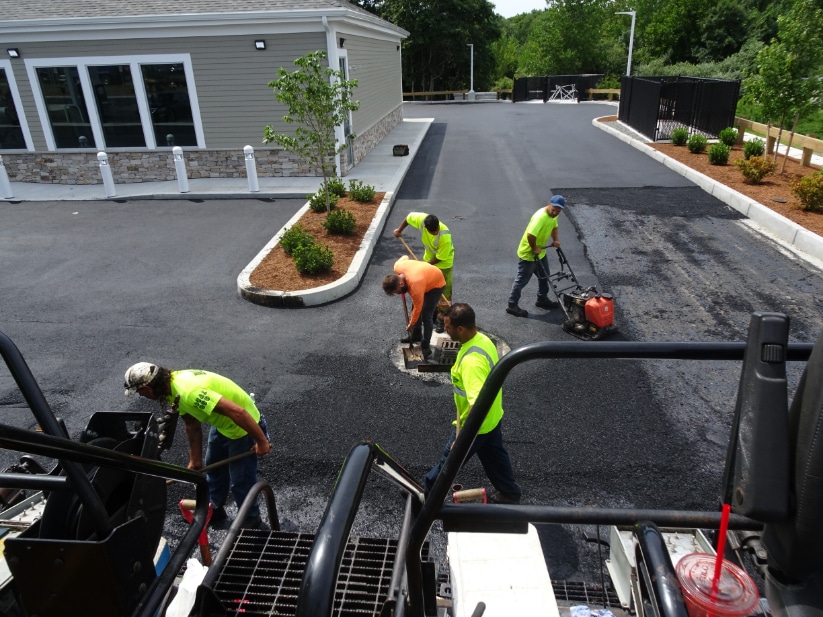
It took teamwork and expertise to make this project a success. One of the elements to consider on such a project is who will run the plate compactor? For this project, the fellows working the plate compactor were professional and skilled. They took their responsibilities seriously and monitored their equipment closely throughout the day, keeping it lubricated and moving correctly. I never saw them pick up material once.
To begin, we built the starter pads for two passes. Those were sealed up with a plate compactor. Then we set the paver back for the first pass of about 100 feet in front of the store. You’ll see that the paver has an 8-foot screed, but we had extensions on it going out to 10 and 12 feet as needed. Because we had to keep moving the extensions in and out, we didn’t affix the auger extensions. That would have been a nightmare to stop and change out as often as we needed to move the extensions. Instead, we monitored the head of material closely and used shovels to manually keep the mix moving all the way to the endgate when necessary.
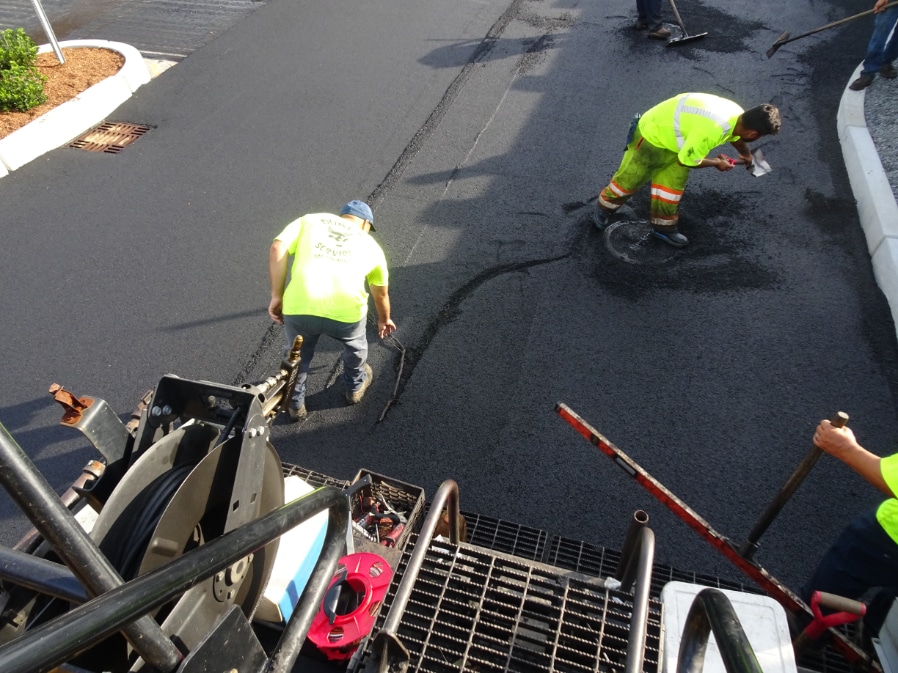
Sometimes the truck drivers don’t clean out their beds. Here, one worker grabs a tree branch that made it through the paver. Also notice a laborer has a smart level ready to double-check slope.
With the first two passes in front of the store complete, we picked up and pulled two passes down the side of the building. This involved a ton of handwork and plate compaction around the stanchions that protect the utility meters and drive-up window.
You’ll see the workers completing another significant amount of handwork inside a curve. They had to build a large enough starter pad to accommodate the screed and that took about 30 square feet of handwork to make room for the screed to get in that curve. That section between the building and fancy curb-work took two 15-foot passes and the third pass of 10 feet.
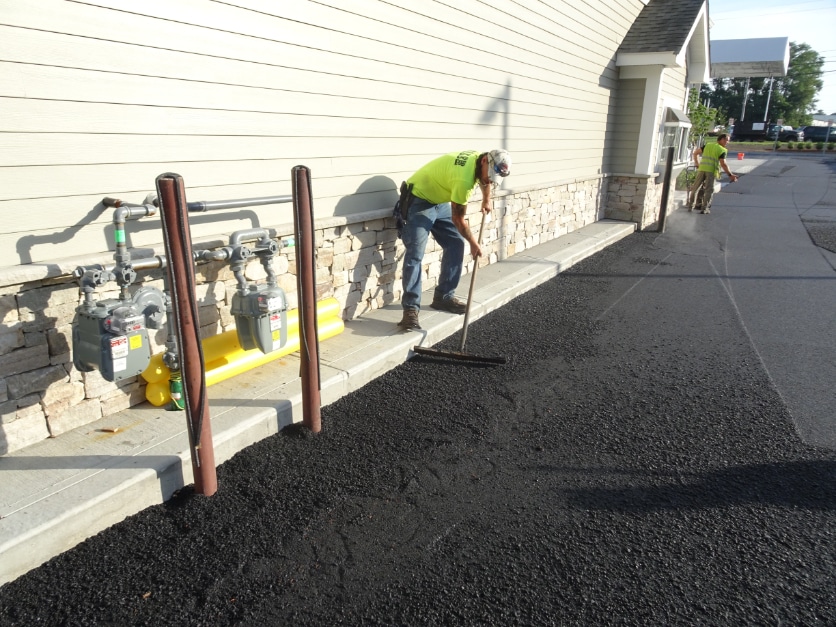
The stanchions protect the gas meter and make handwork an absolute necessity.
Teamwork
One of the highlights of this complex project was the communication and teamwork of the crew. Getting a quality job out of something with this many moving parts boils down to the fine tuning, and this crew paid attention to the fine tuning. It took a lot of time to line it all out, measuring and figuring depth. There’s a lot of finesse getting the right height on the curb and matching all the joints. These crewmembers all worked together and helped one another to get the final top quality product.
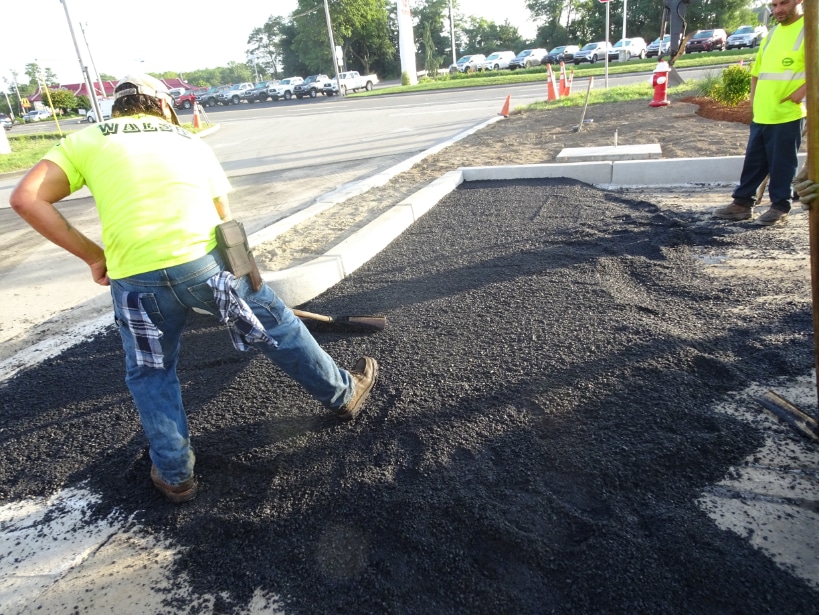
The Pawtucket crew builds the starter pad for the first two passes of the project.
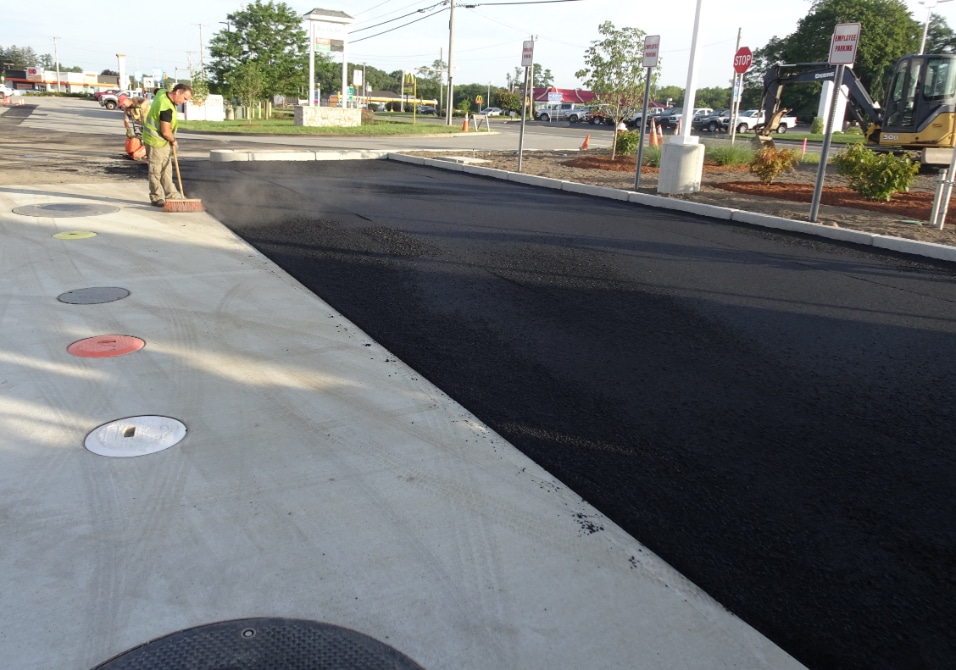
The first two passes along the front of the store were about 100 feet long. Notice the laborers are keeping up with cleanliness and aesthetics throughout the project.
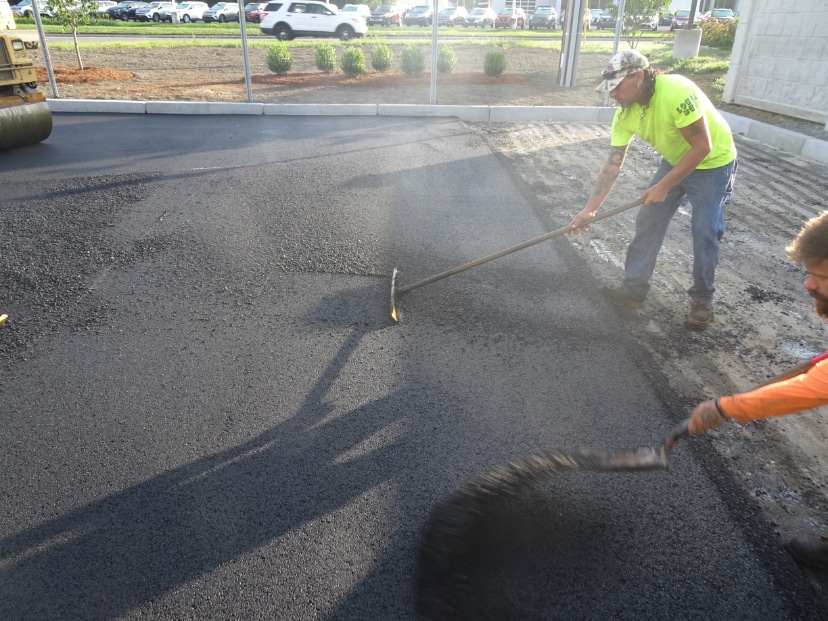
The roller operator is compacting the front passes while the crew pulls the first lane down the side and already begins attending to the utility covers.
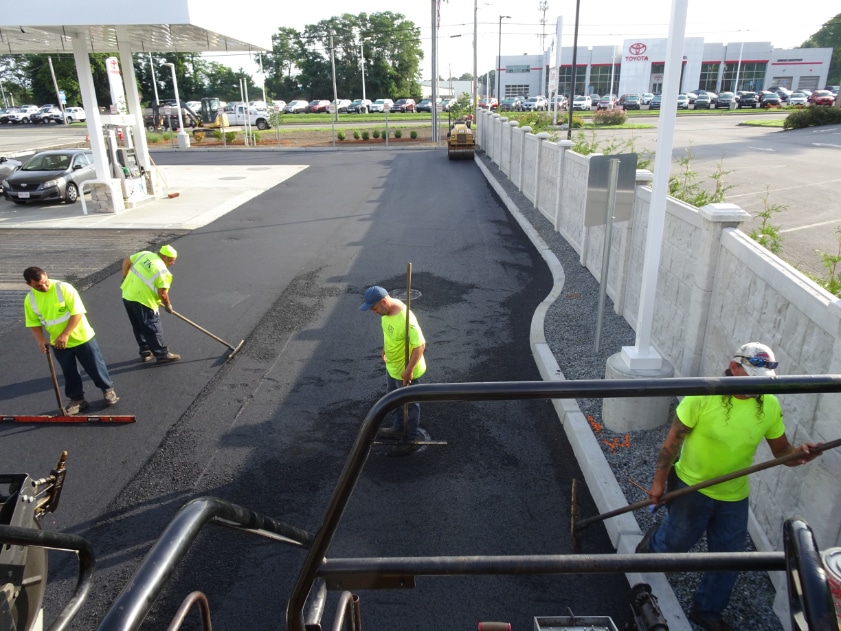
Notice the roller operator has pinched the joint beautifully and is working right along the curb as well.
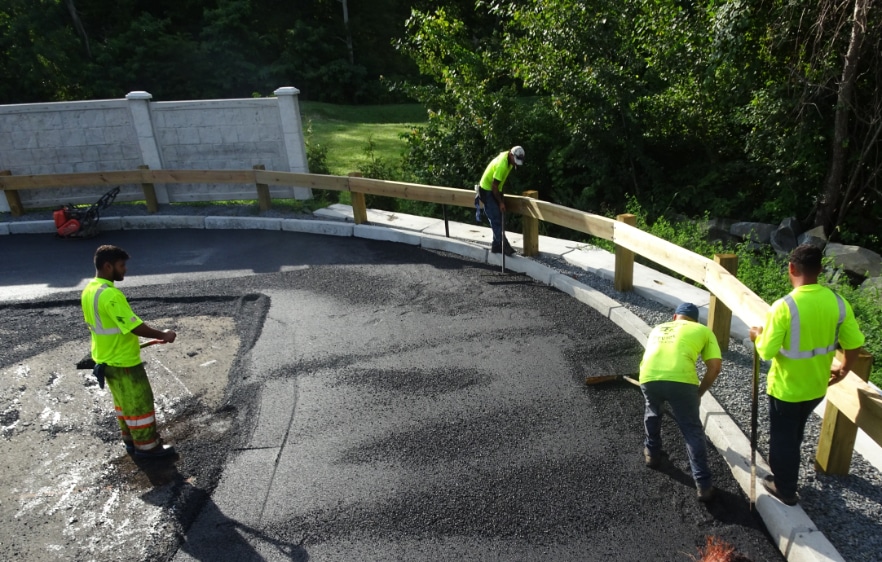
Here, the crew has rounded another corner.
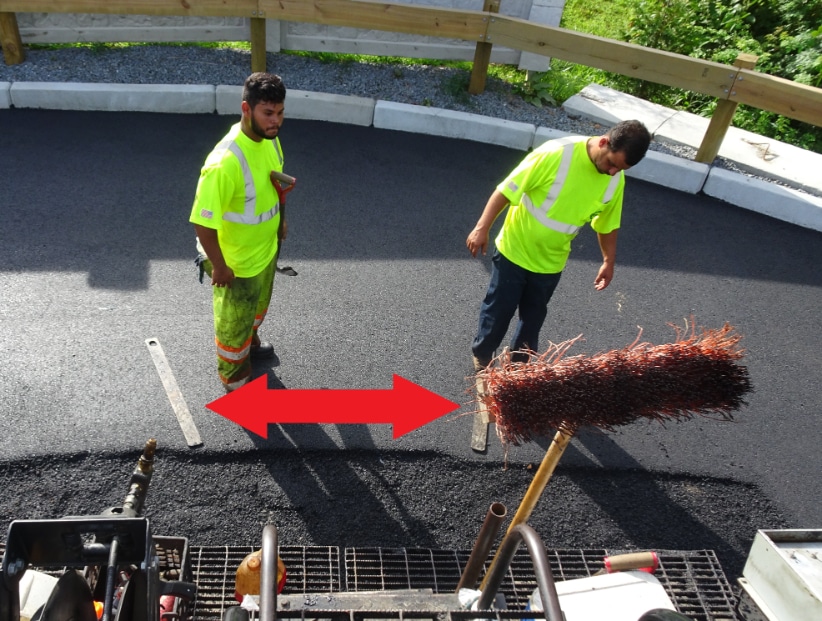
Starter plates help build in the fluff factor.
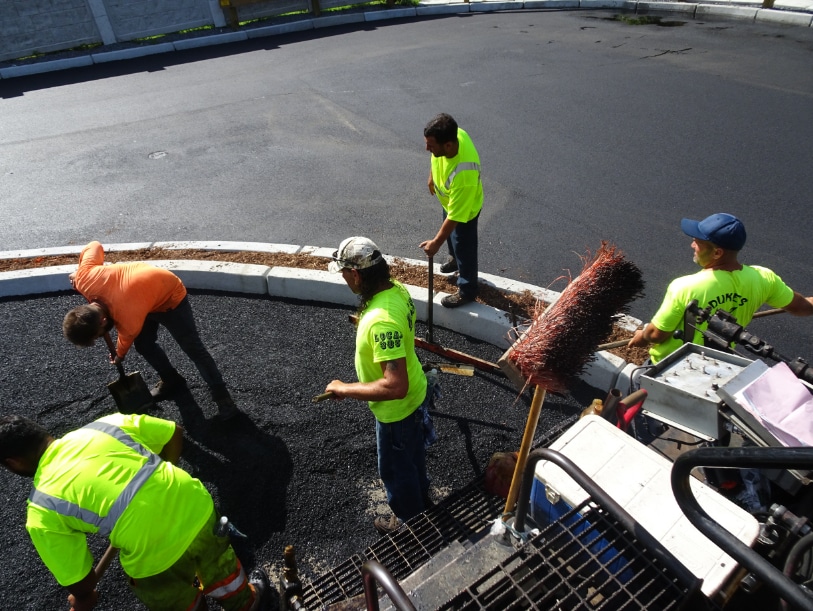
Here the crew builds the entire area inside the curve. Notice one worker has the smart level in hand to ensure they get the pitch right.
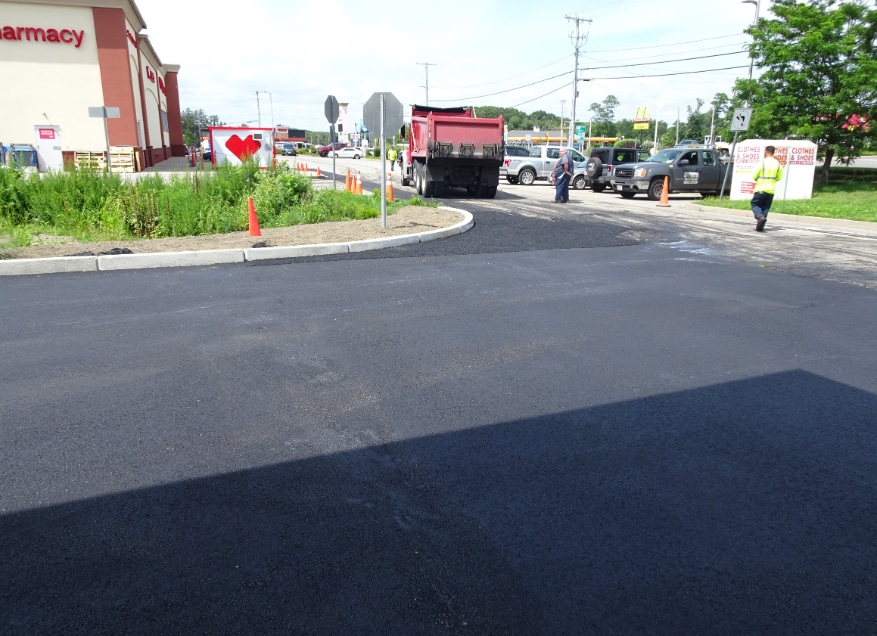
The final touch was to pave a little flare on our way out to meet the road.
John Ball is the proprietor of Top Quality Paving & Training, Manchester, New Hampshire. He provides personal, on-site paving consulting services around the United States and into Canada. For more information, contact him at (603) 493-1458 or tqpaving@yahoo.com.
